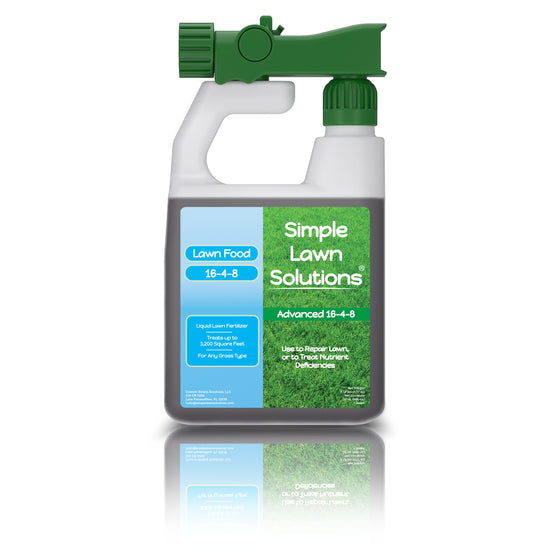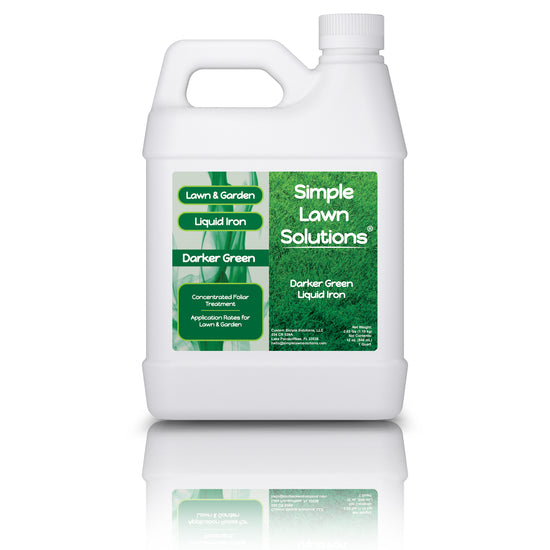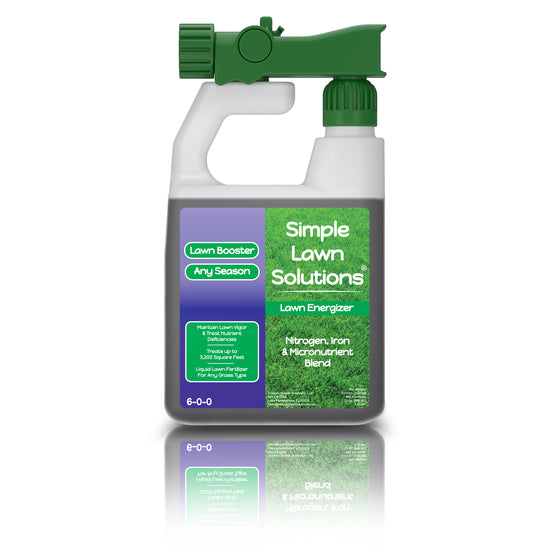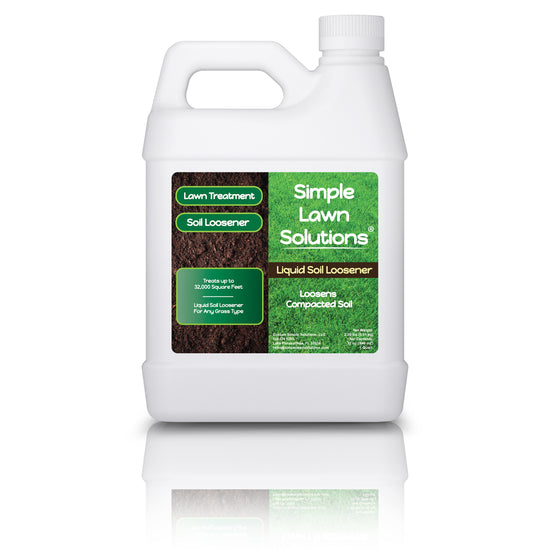Bare spots are one of the most common lawn issues homeowners deal with, and they can be caused by a wide variety of environmental, biological, and maintenance factors. In this guide, we will address the main causes of bare spots in lawns, how to fix them, and what role lawn fertilizer specifically plays.
What Causes Bare Spots in My Lawn?
Heavy Foot Traffic
Frequent walking, playing, or pet traffic compresses the soil, damaging grass roots and preventing regrowth. Bare spots caused by excess traffic present as bare thinning grass in areas that seem to follow a path. You may notice that these spots are present in high-use zones. In these areas, the soil may feel hard and compacted. Water can pool and collect, creating hydrophobic conditions for grass, instead of soaking into the soil.
Dog Urine
Dog urine contains high concentrations of nitrogen and salts, which can “burn” your grass. How to tell you have dog spots? Dog urine spots are circular yellow or brown patches that have a darker green ring on the edge. Dog spots will appear in the same areas your dog urinates soon after.
Grubs and Other Lawn Pests
Insects like grubs, or sod webworms feed on grass roots or blades, killing turf from the roots. Chinch bugs inject toxins into the grass plant.
You can tell there is a grub issue by doing the tug test it’s common that grass will easily pull up like a carpet. You may even notice spongy soil or increased bird/skunk digging activity. In cases of chinch bugs, you may notice yellow patches expanding outward in hot, sunny areas.
Lift a small section of turf to inspect the roots. If you find 5–10+ grubs per square foot, apply a lawn insect control treatment and reseed damaged areas.
Lawn Diseases
Fungal infections like brown patch or necrotic ring spot kill patches of grass, leaving circular bare spots. You may notice circular or irregular patches of brown or dead grass that expand over time. These spots often appear after periods of high humidity, heat, or overwatering.
Overfertilization (Fertilizer Burn)
Applying too much fertilizer adds excess salts to the soil, dehydrating roots and scorching blades. Brown or straw colored patches will appear soon after overfertilizing, and you may notice sharp borders between damaged and healthy grass, with streaks or spreader lines.
Soil Compaction
Compacted soil prevents oxygen, water, and nutrients from reaching roots and manifests as bare spots in high-traffic or clay-heavy areas. The soil is hard, dry, and difficult to penetrate with a screwdriver.
Misuse of Herbicides and Chemicals
Applying too much weed killer, pesticide, or herbicide can damage or kill grass, resulting in bare patches. These patches may appear shortly after treatment in areas near sidewalks, driveways, or edges.

Will Fertilizer Help Fill in Bare Spots?
Fertilizer contains nutrients like nitrogen, phosphorus, potassium, and micronutrients, which feed existing grass plants. Fertilizer will not replace or regrow grass. If you have completely bare patches in your yard, there’s nothing for fertilizer to nourish. You’ll need to repair the area first through seeding or sodding.
Think of fertilizer as food, not medicine: If the “patient” (grass) isn’t alive, feeding it won’t bring it back, but once new grass sprouts, fertilizer helps it grow stronger and fill in faster.
Fertilizer alone won’t fix bare spots caused by:
-
Dead grass from over fertilization, dog urine, disease, or pests
-
Compacted soil that roots can’t penetrate
-
Severe shade or drainage issues that keep grass from growing back
In these cases, you need to correct the underlying problem first. Core aerate compacted soil, fix drainage, or adjust sunlight exposure, then reseed and fertilize after new grass begins to grow.

The Best Way to Fix Bare Spots
Determine the Cause of Bare Patches
There are a few steps to fixing bare spots that you’ll want to plan first. It’s important to determine the cause of bare spots before doing anything.
Remedy the Issue Causing Bare Spots
Bare spots are generally caused by the following ailments, and this is how to deal with these issues.
Heavy Foot Traffic: Core aerate compacted areas, reseed, and consider installing stepping stones or pavers where traffic is unavoidable.
Dog Urine: Flush the area with water immediately after your dog goes. Train pets to use designated areas or install a gravel patch for relief zones. Do not apply fertilizer to this area as it can exacerbate the issue.
Grubs and Other Lawn Pests: Lift a small section of turf to inspect the roots. If you find 5–10+ grubs per square foot, apply a lawn insect control treatment and reseed damaged areas.
Lawn Diseases: Apply a fungicide suited to the disease, improve air circulation, and water deeply but infrequently.
Overfertilization (Fertilizer Burn): Flush the area with deep watering for several days and avoid reapplying fertilizer until the grass recovers.
Soil Compaction: Core aerate once or twice a year and topdress with compost to improve structure. Soil Loosener can be applied in combination with core aeration to help address standing water and nutrient uptake.
Misuse of Herbicides and Chemicals: Water heavily to dilute residues, then reseed. Always follow label instructions carefully.
It is generally not recommended to apply fertilizer to these ailments until the lawn has recovered. After remediating these ailments, you may have to reseed the areas.
Reseed the Area
Reseeding bare spots correctly makes all the difference between a patchy repair and a seamless, lush lawn. Below is a step-by-step guide you can use to learn how to seed bare spots in the lawn, including best practices for timing, soil prep, and care after seeding.
Steps for Reseeding Bare Spots
-
Rake out dead grass and loosen the top 1–2 inches of soil.
-
Mix in compost or topsoil if the area is hard or nutrient-poor.
-
Level the spot so it blends with the surrounding turf.
-
Pick a high-quality grass seed with at least an 85% germination rate that matches your existing lawn and region:
-
-
Cool-season: Fescue, Ryegrass, Bluegrass.
-
Warm-season: Bermuda, Zoysia, Centipede, St. Augustine.
-
-
Use a starter fertilizer rich in phosphorus, like 6-18-0 Growth Booster, to promote strong root growth.
-
Evenly scatter seed by hand or with a small spreader.
-
Lightly rake to cover with ¼ inch of soil.
-
Add a thin layer of straw, compost, sand, or seed-starting mulch to retain moisture around the seed when watered.
-
Keep the top inch of soil moist, not soggy. Water lightly 1–2 times daily until grass sprouts. Once seedlings reach 1 inch, water less often but more deeply.
-
Mow when new grass is 3–4 inches tall, using sharp blades.
-
After 2–3 mowings, apply a balanced NPK fertilizer, like 16-4-8 lawn fertilizer.

Soil Health is Key to Preventing Bare Spots
Healthy soil is the foundation of a thriving lawn because it provides the nutrients, structure, and biological activity that grass needs to grow strong. When soil is compacted, low in organic matter, or lacking essential nutrients, grass roots struggle to take in water and oxygen, which can lead to thinning turf and bare spots. A healthy, well-aerated soil with balanced pH supports deep root growth, better nutrient absorption, and overall resilience.









